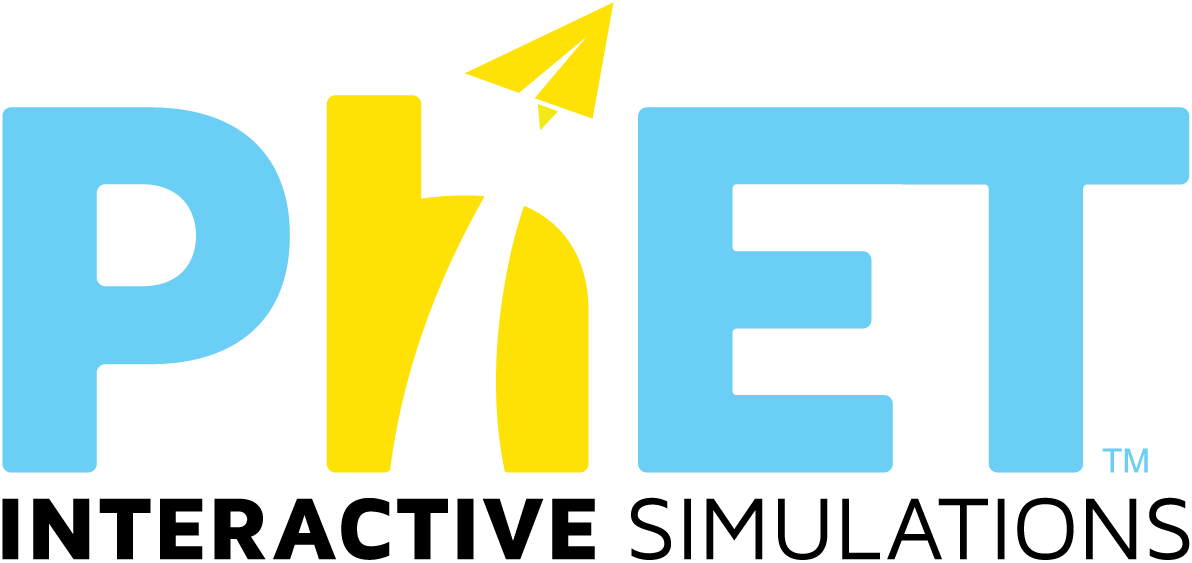184 søkeresultater som passer elementary charge
Simuleringer
- Alfanedbryting
- Anslag/estimat
- Avbøyning av lys (HTML5)
- Ballonger og statisk elektrisitet (HTML5)
- Ballonger og statisk elektrisitet
- Bygg et atom (HTML5)
- Bølgeinterferens (HTML5)
- Bølger - innledning (HTML5)
- Coulombs Lov (HTML5)
- Drivhuseffekten
- Elektrisk landhockey
- Energiformer og overganger (HTML5)
- Energi i skateparken - Grunnleggende (HTML5)
- Energiskatepark
- Fargesyn (HTML5)
- Friksjon (HTML5)
- Gassegenskaper
- Gravitasjon og baner (HTML5)
- Introduksjon til gasslover (HTML5)
- Isbreer
- Kondensatorer - grunnleggende (HTML5)
- Krefter og bevegelse: Grunnleggende (HTML5)
- DC-Kretskonstruksjon (HTML5)
- DC kretslaboratorium (HTML5)
- Ladninger og Felt (HTML5)
- Lodd og fjærer
- Lyd
- Mannen som går
- Molekylpolaritet (HTML5)
- Molekylpolaritet
- Pendellaboratorium (HTML5)
- Prosjektilbevegelse (HTML5)
- Rutherfordavbøynig (HTML5)
- Salter og Løselighet
- Transport gjennom cellemembranen (HTML5)
- Veksle utttrykk (HTML5)
- Concentration (HTML5)
- Natural Selection (HTML5)
- States of Matter: Basics (HTML5)
- Area Builder (HTML5)
- Area Model Decimals (HTML5)
- Area Model Introduction (HTML5)
- Area Model Multiplication (HTML5)
- Arithmetic (HTML5)
- Balancing Act (HTML5)
- Build a Fraction (HTML5)
- Capacitor Lab
- Density (HTML5)
- Eating & Exercise
- Electric Field of Dreams
- Equality Explorer: Basics (HTML5)
- Faraday's Electromagnetic Lab
- Fraction Matcher (HTML5)
- Fractions: Equality (HTML5)
- Fractions: Intro (HTML5)
- Fractions: Mixed Numbers (HTML5)
- Function Builder: Basics (HTML5)
- Generator
- Geometric Optics: Basics (HTML5)
- Gravity Force Lab: Basics (HTML5)
- Greenhouse Effect (HTML5)
- John Travoltage (HTML5)
- Ladybug Motion 2D
- Lunar Lander
- Magnet and Compass (HTML5)
- Magnets and Electromagnets (HTML5)
- Make a Ten (HTML5)
- Masses and Springs: Basics (HTML5)
- Maze Game
- My Solar System (HTML5)
- Number Compare (HTML5)
- Number Line: Integers (HTML5)
- Number Pairs (HTML5)
- Number Play (HTML5)
- Proportion Playground (HTML5)
- Quadrilateral (HTML5)
- Radiating Charge
- Ratio and Proportion (HTML5)
- Signal Circuit
- Sugar and Salt Solutions
- John Travoltage
Aktiviteter
- Moving Man, elementary
- Electrical Charge Lab
- Build an Atom
- How Can You Light A Bulb?
- Inquiry Based Modeling Static Electricity
- Charges and Fields Remote Lab Introduction to Static Electricity
- Coulomb's Law Lab
- Ladybug Motion in 3rd Grade
- Balloons and Static Electricity for Middle School
- Calculating the net charge of an atom/ion
- Colors, Bunnies and Wolves: does the strongest survive?
- Area Builder for grades 3-5
- Fraction Matcher Grades 3-5
- Eating and Exercise PhET: Body Systems grade 4-5
- Force and Motion Basics - Second grade
- Intro to Photoelectric Effect Interactive Lecture
- Introduction to Static Electricity using Electric Field Hockey and Charges and Fields (Inquiry Based)
- Electric Field Hockey Simulation Homework
- Elementary Pendulum Lab 4th-5th
- Mapping Electric Fields
- Interpreting Chemical Symbols
- Charge and Energy Conservation in Circuits Inquiry
- Electric Charge Basics
- Balloons and Static Electricity
- Describing Location and Movement
- Radioactive Decay
- Radioactive Decay - ILD
- Capacitor_Lab_Basics _html_Remote_lab
- Electric Fields & Point Charges
- Investigating Electric Fields
- Build an Atom - Guided-Inquiry Activity
- Capacitor Lab: Inquiry into Capacitor Design
- Building Fraction Sense Using “Fractions Intro PhET Simulation”
- Exploring Electric Charges
- Exploring the density of mysterious objects
- Float or Sink? An essay on the density of materials
- Build an Atom WebLab
- Heat or temperature
- Collecting and analyzing density data
- Comparing the properties of different materials
- Heat or temperature?
- High School Exploratory Lab for Balloons and Static Electricity
- Static Electricity
- Eating and Exercise Activity
- Geometric figures
- Activity in Electricity (Coulomb's Law)
- Electric Field Simulation Activity
- Electric Field and Potential Lab
- Salts and Solubility 5: Designer Salts (Inquiry Based)
- Exploring Electric Potential, Electric Field and Distance Relationships
- Balloons and Static Electricity | Remote Lab
- PhET Student Interactive Introduction on Capacitance & Dielectric Constants
- Electric Field and Electric Field Lines
- Capacitor Design Remote Lab
- Static Electricity Virtual Lab
- Electric fields
- C.A.S.T.L.E. Unit 2 Labs
- Charges and Charged Objects Investigation
- Electric Field Hockey Post Activity
- Electric Fields Simulation
- What Type of Light Bulb Should I buy for my Grandma?
- Measuring Current in a Series Circuit
- Electric Field Activity
- Atom Builder
- coulomb's Law
- Coulomb's law
- PhET activity guide
- Electric Field Hocket
- Charges & Fields PhET Lab
- Build an Atom, Isotope, & Ion
- Build an Atom: Introduction
- Force and Motion Sim Activity
- Energy Skate Park Basics: Énergie potentielle et cinetique
- (BNCC) Comparando as propriedades de diferentes materiais
- Build an Ion Inquiry Activity
- Coulombic Force Simulation Observations
- Static Electricity Lab!
- Build an Atom
- Homework Activity I
- Energy Forms and Changes
- Equipotential Surfaces Lab Activity
- Introduction to Electrostatics
- Determinine Electric Field Relationships
- 'Lectronic Plates
- Travoltage Lab
- Lab: PhET Build an Atom
- Chemistry - Introduction to Coulomb's Law
- Lab: Electric Field and Potential
- Charges and Fields Exploration
- The capacitance of a parallel-plate capacitor, effects of dielectric in a capacitor
- Electric field - patterns and strength
- Charging By Rubbing
- Capacitor and Dielectric 2
- PHET Charges and Fields Activity Part 1
- How do PhET simulations fit in my middle school program?
- Electric Field Lab
- Kirchhoff's Law
- Guided Inquiry - Electric Fields
- Playing with atoms
- MS and HS TEK to Sim Alignment
- Capacitor Lab: Basics: Inquiry into Capacitor Design
- Coulomb's Law Data Collection and Analysis (remote online learning)
- Computer Simulations as a Tool to Assist Teaching Basics of Electromagnetism (Simulações Computacionais Como Ferramenta Auxiliar ao Ensino de Conceitos Básicos de Eletromagnetismo)


